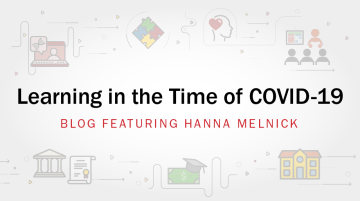Healthy Child Development Depends on Quality Child Care—And So Does the Economy

This post is part of LPI's Learning in the Time of COVID-19 blog series, which explores evidence-based and equity-focused strategies and investments to address the current crisis and build long-term systems capacity.
With children and families forced to stay home during the past 2 months due to the COVID-19 pandemic, thousands of child care and preschool providers have suddenly lost their main sources of revenue. Many were closed along with public schools, while others were restricted to serving children of essential workers, losing much of their normal clientele. The impact of these closures and restrictions has been significant. Between March and April of this year, 336,000 child care workers lost their jobs, and thousands of child care centers and family child care homes are now in danger of closing permanently. Closures could lead to the loss of as many as 450,000 child care slots, undermining both the ability of parents to return to work and efforts to reopen the economy.
Just as concerning is the potential effect of child care closures on the 11.8 million children under age 5 who rely on their providers for stable, nurturing care. A child’s early years are a crucial time for learning, and research shows that a secure attachment to an adult caregiver is key to healthy development. For many children, early educators provide these foundational relationships. Loss of these relationships and the early learning opportunities preschool provides can exacerbate the large achievement gaps that emerge between children from low-income families and their more affluent peers. These gaps begin well before children arrive at kindergarten—the same achievement gaps that k–12 educators will soon be scrambling to close.
COVID-19 is revealing the fragile state of our child care system. Despite increases to public funding, more than half of child care and early learning costs in our nation are paid by families, and many programs that serve children on public subsidies also rely on private tuition. In a recent survey, 61% of parents reported that their child care provider had closed due to COVID-19. Most parents have stopped paying tuition during the closure. There is little room for providers to make up for that lost revenue, since they operate on thin margins and the vast majority of funds go to payroll and rent. Cutting wages isn’t a viable option, given that child care workers are paid an average of just $10.72 an hour—which is less than what 98% of U.S. workers make.
What will it take to keep child care programs open? One analysis from the Center for Law and Social Policy (CLASP) estimates that it will cost about $9.6 billion a month, for a total of more than $50 billion. This estimate assumes that the government would cover private programs’ lost tuition for 6 months to enable them to continue paying staff and rent. The CLASP estimate also assumes that the government covers the cost of providing child care for essential workers, which it projects at about 20% more per child to meet enhanced health and safety standards. The policy analyzed in this plan would extend to all licensed child care providers in the nation, excluding state preschool and Head Start, whose grants have continued. Additional analyses are needed to estimate the cost of more targeted support.
States and the federal government are mobilizing to respond to the impending child care crisis, but the costs and logistical challenges are daunting. Child care providers were eligible to apply for small business loans through the Paycheck Protection Plan, made available in the first federal relief packages, to cover the costs of rent and payroll. However, it appears that many programs were not successful in securing the first round of loans, which were available on a first-come, first-served basis.
In March, a federal relief package provided an additional $3.5 billion for the Child Care Development Block Grant (CCDBG) for emergency support. Many states, such as California and Connecticut, have used the funds to pay for child care for the children of essential workers. Several others have used the funds to stabilize private care providers. Minnesota, for example, is distributing emergency grants to providers who are still open but have lost tuition revenue, with extra funding going to programs that serve children with special needs and for children who are dual language learners. Through its Child Care Stabilization Payment Program, Vermont is offering support to providers that serve private-pay families who are currently unable to afford tuition.
However, if CLASP’s analysis is accurate, the additional $3.5 billion for CCDBG, or even the $7 billion in additional funding included in the U.S. House of Representatives’ bill that passed on May 12, will not keep child care programs afloat for long. Various proposals have surfaced in the House and Senate that would add to these early efforts. In the absence of substantial new funding, states will be forced to make tough decisions about how to allocate limited resources, as they did during the Great Recession, when funding for 120,000 child care slots was cut in a single year. The losses this time will be much greater, both to families and to society at large.
Amidst the competing priorities for public funding during this crisis, policymakers should remember that sustained investments in early learning have been shown to pay off in long-term benefits for children, with strong returns on investment. In the short run, these investments will also allow America to go back to work.
